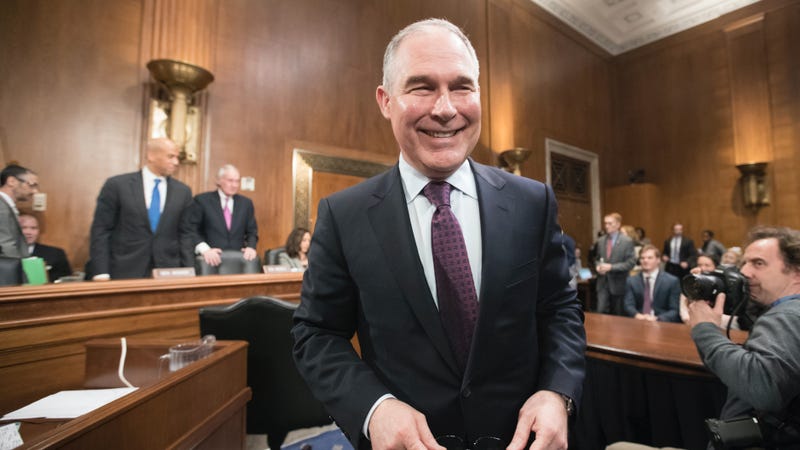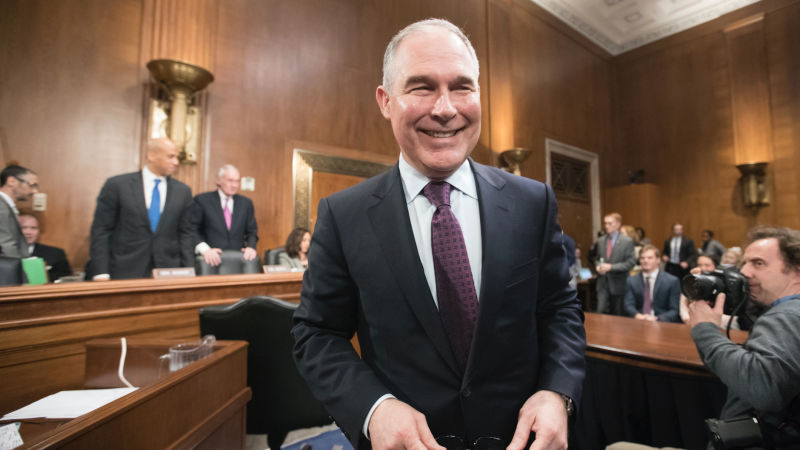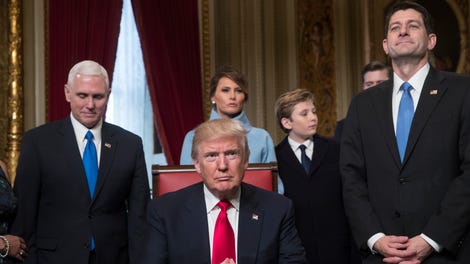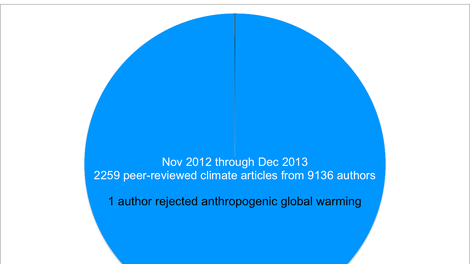
Despite extraordinary backlash, former Oklahoma Attorney General Scott Pruitt has just been named to head the Environmental Protection Agency for the Trump administration. The vote came one day after a judge ruled Pruitt has until Tuesday to release 3,000 emails between himself and executive members of the fossil fuel industry. It’s a highly controversial appointment celebrated by many in the fossil fuel industry, and dreaded by a number of environmental scientists, some of whom now work for him.
To recap: Pruitt, who has sued the EPA 14 times as Oklahoma Attorney General, and wouldn’t promise to recuse himself from ongoing suits once he was confirmed, once described himself as the “leading advocate against the EPA’s activist agenda.” He is on the record saying that the “[climate change] debate is far from settled.” He even told a flabbergasted Bernie Sanders that his personal opinion of climate change is “immaterial” to his role as head of the EPA.
With Trump already targeting Obama-era regulations, Pruitt is part of a wide-scale realignment of several federal organizations, including the Department of Energy and Department of the Interior, to better serve fossil fuel interests. Here are three key areas of Obama’s climate and environmental legacy we can expect a Pruitt-led EPA to try and dismantle.
The Clean Power Plan
The Clean Power Plan, a cornerstone of Obama’s climate legacy, may be first on the chopping block. The overarching goal of the plan is to cut carbon emissions in the US to 30 percent below 2005 levels by 2030, by targeting greenhouse gas-spewing coal and gas-fired power plants. Obama championed the legislation as essential to the US meeting its emissions reductions target under the Paris climate agreement, an international accord to combat global warming.
Advertisement
Advertisement
In 2015, Pruitt led a coalition of 28 states in a lawsuit against the EPA that aimed to block the CPP’s implementation, saying it overburdens coal-dependent economies by forcing them to choose between energy production and federal compliance. Some states, Pruitt argued, will see massive layoffs in the energy sector and state-wide power shortages.
“Those are alarmist talking points,” said Danny Cullenward, a research associate at the Carnegie Institution for Science. Cullenward points out that a number of states, even those protesting the law, are close to meeting its regulatory goals. “The idea that this is gonna cause blackouts and massive layoffs is really a farce. There are massive transformations underway in the US power sector that are driven by completely different forces,” including the booming natural gas industry, and rapidly-falling cost of renewable energy.
Keith Gaby, Senior Communications Director for the Environmental Defense Fund, points to California, the nation’s leader in green energy, as an example of how reducing emissions can spur job growth. A full 20 percent of California’s total energy generation comes from renewable sources, with its solar-generating capacity increasing a staggering 1,378 percent over five years. At the same time, California saw a surge in green energy jobs.
Sponsored
“The crazy thing is, this is a really flexible plan, very business-friendly, ” Gaby said, noting out that existing power plants be retrofitted to reduce emissions rather than shutting down wholesale. “[The states] were just against the concept of taking climate change and clean air seriously.”
The CPP is still tied up in the suit Pruitt and the dissenting states filed, but neither Trump nor Pruitt can kill the plan outright. Their best hope of a complete repeal is if Trump’s appointee, Neil Gorsuch, is granted a seat on the Supreme Court and it’s struck down. Far more likely, however, is the Supreme Court will call for a remand, which sends the law back to the EPA, where Pruitt could rework the rule into a weaker, more corporate-friendly version.
The Clean Air Act
Pruitt has also filed suit against the EPA to block regulatory amendments to the Clean Air Act. First passed in 1963, then amended with federal mandates in 1970, the Clean Air Act is periodically updated with new pollutants that must stay within certain thresholds. Pruitt has filed separate suits to block new amendments regulating carbon dioxide, mercury and ozone pollution. He has argued that the EPA’s 2009 decisionto regulate CO2 as an air pollutant is based on faulty science, leading an appeals court to rebuff him by saying: “[the] EPA is not required to re-prove the existence of the atom every time it approaches a scientific question.”
Advertisement
Advertisement
Pruitt argues that agencies like the EPA routinely overestimate the pollution caused by coal plants, and that imposing strict regulations would cause power shortages, leading to neighborhood-wide blackouts. There’s little evidence to support this, and especially not in Pruitt’s home state of Oklahoma, where most residents no longer depend on coal to keep the lights on.
“Climate policy isn’t killing the coal industry, economics is killing the coal industry,” Cullenward said, explaining that the decline in American coal production is part of a nationwide shift to natural gas and renewable energy. “The pursuit of natural gas under first the Obama Administration and now the Trump Administration is really putting the nail in the coffin [for coal].”
“They’re looking for scare tactics,” Gaby added. “[The Clean Air Act] regulates mercury and smog and toxins and all sorts of things that cause more asthma attacks and developmental problems in children and premature deaths in the elderly. It’s done this successfully for decades without hurting the economy.”
Advertisement
As Gaby noted, the Clean Air Act was passed under President Nixon, then strengthened under the first President Bush. Both Republicans. But increasing partisanship, and the politicization of climate science means the introduction of a greenhouse gas (CO2) to the act’s regulatory purview has become a divisive, rather than unifying cause.
Whether or not Pruitt is ideologically on board with regulating CO2 as a pollutant, he has made it clear he intends to work within the existing laws. The New York Times reports Pruitt has drafted legislation that would seriously de-fang the Clean Air Act, giving corporations far weaker regulatory goals for air pollutants like carbon dioxide.
International Consequences
A key function of both the Clean Air Act and Clean Power Plan as shaped by the Obama administration is to keep America compliant with the Paris Agreement, which created climate goals for 195 counties in an international bid to reduce global warming. Before the Paris Agreement, an international climate deal was in limbo for decades, with the developing and developed worlds unable to agree on emissions targets. The ratified agreement finally offered more individualized goals, and importantly, required that wealthy nations pay a little extra to help developing countries bake green energy into their long-term development.
Advertisement
Advertisement
The US, both wealthy and a major fossil fuel consumer, was a very visible player in getting the accord ratified.
Trump has pledged to withdraw from the agreement. Pruitt hasn’t commented either way, but his earnest support of downsizing the supportive pillars of the Paris Agreement send clear messages to the rest of the world, particularly given Trump’s “America first” commitment. According to Gaby, the consequences of myopic nationalism on the climate stage would be both economic and environmental.
“The rest of the world has to decide ‘can we go forward without the world’s largest economy?’ I think a lot of people say yes overseas, but there are gonna be consequences to it.”
Advertisement
Former French president Nicolas Sarkozy has advocated that Europe impose a carbon tax on American imports if the US reneges on the climate agreement. Gaby worries there could be even more consequences, such as Americans getting shut out of oversea markets entirely. “You’re going to have a ripple effect and America really getting left behind.”
Pruitt’s bid for hyper de-regulation is great news for fossil fuel industries, but not so much for the rest of the world. 2016 was the hottest year on record. The same was true of 2015 and 2014. As the warming trend continues, experts warn of more droughts, an increase in severe weather, and potentially devastating levels of sea level rise. Drastic steps are required to avert climate catastrophes, not watered down half-measures created to fit within corporate profit motives.
Advertisement
“If the Trump administration tramples [the Paris Agreement], we will slow down our march toward clean energy,” Gaby said. “At the moment we need to be more efficient, we would be surrendering.”
















